Lapara coniferarum, the Southern Pine Sphinx
Lapara coniferarum
luh-PAHR-uhmm
kon-ih-fer-AIR-um
Southern Pine Sphinx
(J. E. Smith, 1797) Sphinx coniferarum
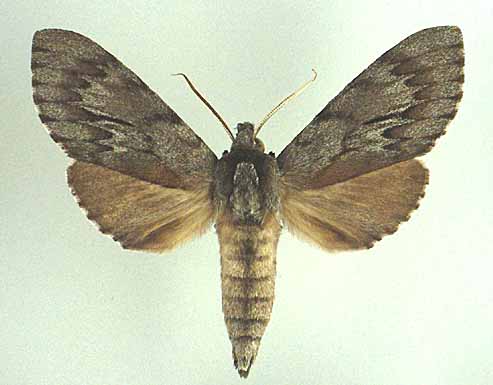
Lapara coniferarum male courtesy of Vernon Brou.
This site has been created by
Bill Oehlke at oehlkew@islandtelecom.com
Comments, suggestions and/or additional information are welcomed by Bill.
TAXONOMY:
Family: Sphingidae Latreille, [1802]
Subfamily: Sphinginae Latreille [1802]
Tribe: Sphingini Latreille, [1802]
Genus: Lapara Walker, 1856
Species: coniferarum (J. E. Smith, 1797)
|
MIDI MUSIC
It's a Wonderful World
copyright C. Odenkirk
ON.OFF
<bgsound src="world.mid" LOOP=FOREVER>
|
DISTRIBUTION:
Lapara coniferarum, the Southern Pine Sphinx
(Wing span: 2 - 2 1/4 inches (5 - 5.7 cm), females are larger than males), ranges through mixed and pine forests
from Nova Scotia and Maine south to Florida, and west to Indiana and Louisiana.
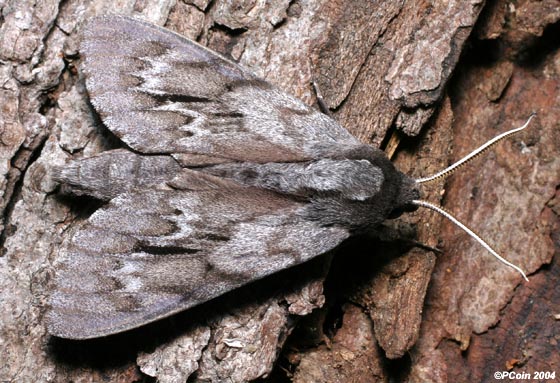
Lapara coniferarum
© Patrick Coin, used with permission,
Durham County, North Carolina,
July 10, 2004
The upperside is of the forewing is gray with two (sometimes one or
three) black dashes near the wing center;
other markings are usually diffuse. The upperside of the hindwing is
a uniform brown-gray.
This species does not have the more sharply contrasting black
markings of a fresh Lapara bombycoides. There is also an
extensive reddish brown patch in the median area near the
forewing inner margin of L. coniferarum.
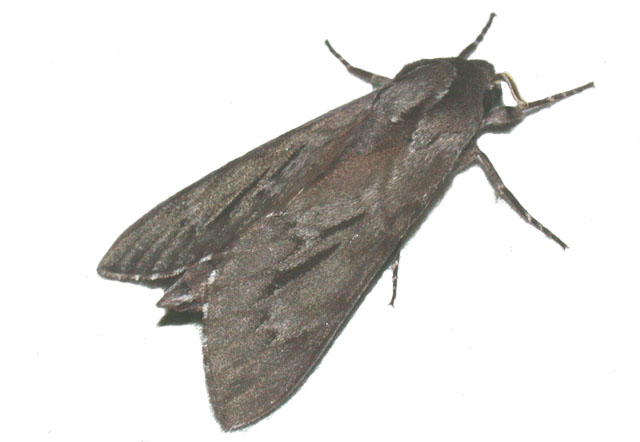
Lapara coniferarum, Long Island, July 20, courtesy of Hugh McGuiness.
FLIGHT TIMES:
Male and female Lapara coniferarum moths have several broods throughout the
year in Florida and from March-October (five broods annually, courtesy of V. A. Brou) in Louisiana. There are probably two broods from April-September in coastal
South Carolina, and one brood from June-August northward.
ECLOSION:
Little is known about the eclosions of the earth pupators, but
many believe pupae wiggle toward the surface just prior to emergence.
SCENTING AND MATING
Female Lapara coniferarum extend a scent gland from the posterior of
the abdomen to lure in the night flying males.
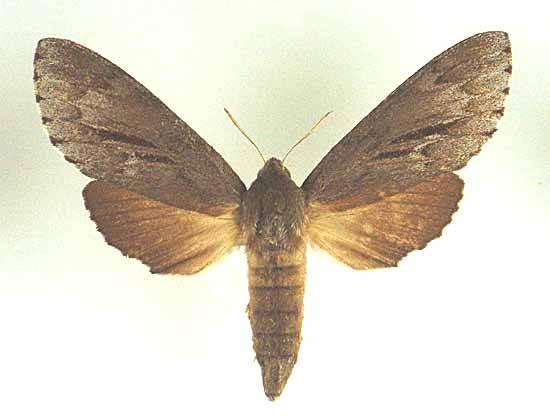
Lapara coniferarum female courtesy of Vernon Brou.
EGGS, LARVAE, PUPAE:
Lapara coniferarum eggs are a translucent green and incubation
lasts 8-10 days at constant temp of 68-72 F.
Larvae feed upon various pine species, including loblolly pine
(Pinus taeda) and longleaf pine (P. pinaster).
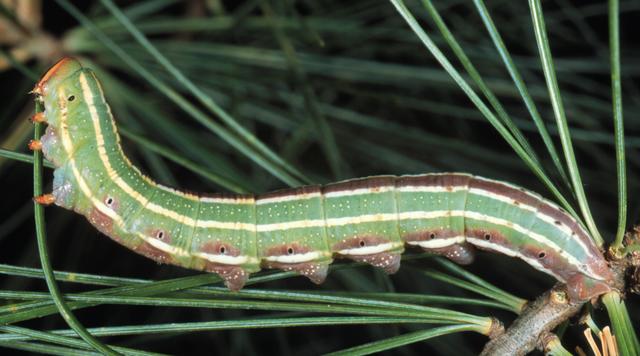
Lapara coniferarum courtesy/copyright
David Wagner.
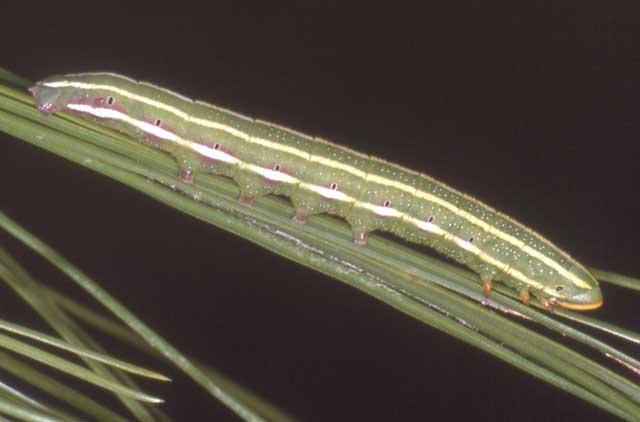
Lapara coniferarum fifth instar, Abita Springs, St. Tammany Parish, Louisiana,
copyright/courtesy of James P. Tuttle.
Many thanks to Jenny Sommerfeld who sends the following images from Hernando County. Jenny found the pupa on some sandy soil beneath some pine trees.
A few days later the female emerged, and she deposited at least one egg before her release.
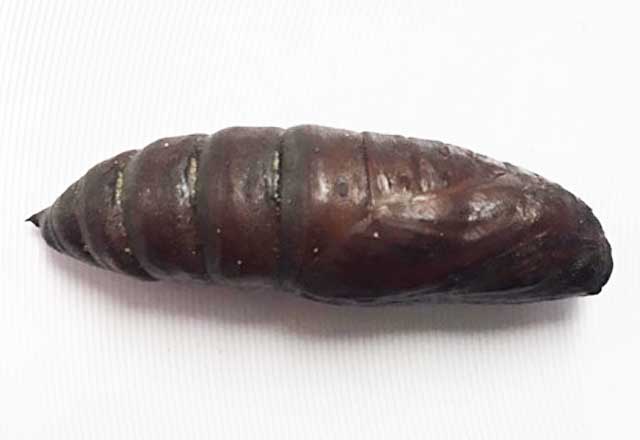
Lapara coniferarum pupa, 40mm long, Hernando County, Florida,
courtesy of Jenny Sommerfeld.
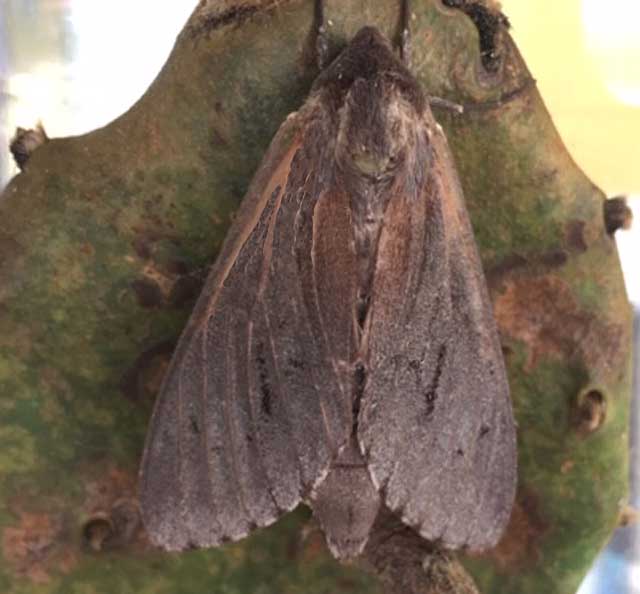
Lapara coniferarum female, Hernando County, Florida,
courtesy of Jenny Sommerfeld.
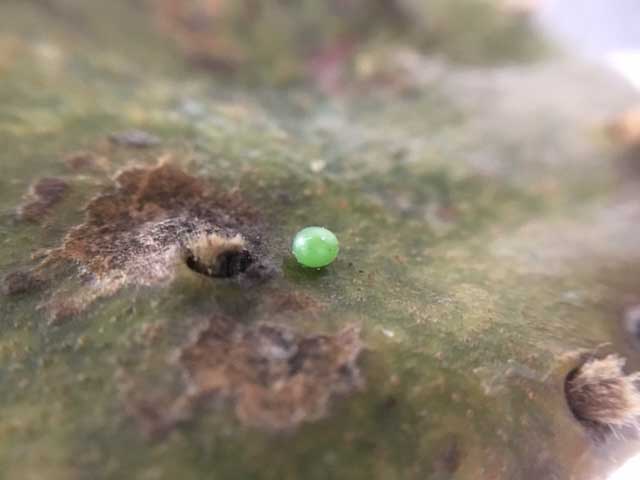
Lapara coniferarum egg, Hernando County, Florida,
courtesy of Jenny Sommerfeld.
Larvae pupate readily under paper towels (no soil medium needed) in a dark bucket.
Return to Sphingini Tribe
Return to Sphingidae Index








